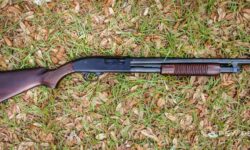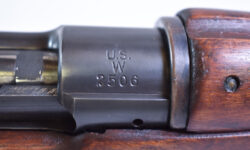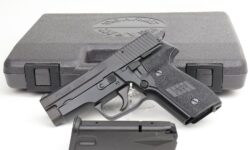The Right Shot for Pheasant: What Size to Use
When you are out in the field hunting pheasant, it is important to use the right size shot. If you use too small of a shot, you may not be able to kill the bird. If you use too large of a shot, you may waste your ammunition and not bring down the bird. In this blog post, we will discuss what size shot to use when hunting pheasant!
When it comes to using the right size shot for pheasant, there are a few things you need to keep in mind. The first thing you need to consider is the range at which you will be shooting the bird. If you are going to be shooting at birds that are close by, then you can use a smaller size shot like #12 or #14. If you are going to be shooting at birds that are further away, then you will want to use a larger size shot like #BB or #T.
What Size Shot For Pheasant?
Another thing to keep in mind when choosing the right size shot for pheasant is the type of terrain you will be hunting in. If you are hunting in open fields, then you can use a larger size shot. However, if you are hunting in dense woods, then you will want to use a smaller size shot so that you don’t hit any trees or branches.
Ultimately, the right size shot for pheasant depends on your personal preference and the situation you are in. If you are unsure of what size to use, it is always best to ask someone who has more experience hunting pheasant.
When choosing a shotgun shell for pheasants there are many things to consider: range, terrain and bird behavior.
Another consideration which isn’t talked about as much is choke. A tighter choke will result in a higher pellet count at a given distance but with less penetration. This is something to consider when hunting birds like pheasants that can be very tough to bring down.
When considering all of the factors listed above, my personal preference for shotshells for pheasant ranges from #T shot size for long range shots where I know I’ll have good penetration due to dense habitat or smaller bird species up to #BB for flushing birds in open country.
Do you have to use steel shot for pheasants?
No, you don’t have to use steel shot for pheasants, but it is the best choice. Lead shot is still legal in some areas, but it’s not as effective as steel shot. Heavier Shot- 12 gauge and 16 gauge shotshells are loaded with a heavier shot than 20 or 28 gauge shells. The larger the number, the heavier the shot.
When you are hunting pheasant, always use a shotgun that is chambered for the appropriate gauge shell. Make sure your barrel is clean and free of obstructions so you can deliver your payload effectively. And remember to pattern your gun with the shot size and choke you will be using before the hunt. This way, you’ll know what to expect when you take aim on a rooster.
With steel shot, there’s no need to worry about over-penetration or ricochets. The pellets will mushroom on impact, causing massive tissue damage and quickly putting down your bird. So make sure you’re carrying a box of steel shot shells when heading out for some pheasant action!
Can you shoot pheasants with lead shot?
Yes, you can shoot pheasants with lead shot. However, the U.S. Fish and Wildlife Service recommends using non-toxic shot whenever possible. There are many different types of non-toxic shot available, so be sure to choose the right type for your hunting situation.
Lead shot is still legal in some states, but lead poisoning is a real concern for wildlife. When birds eat pellets of lead shot, the metal can damage their digestive system and cause internal bleeding. This often leads to death.
Is copper plated shot non-toxic?
Non-toxic shot became required by federal law for waterfowl hunting in 1991. This means that lead shot is now illegal for hunting ducks, geese, and other migratory birds. While the use of non-toxic shot for upland bird hunting is not federally mandated, it is a good idea to switch to copper plated shot whenever possible. Copper plated shot is just as effective as lead shot for taking these birds, and it is much safer for the environment. Non-toxic ammunition also eliminates any possibility of lead poisoning in dogs that may ingest spent shells.
The only downside to using copper plated shot is that it can be more expensive than traditional lead ammunition. However, this extra cost is worth it for the sake of safety and conservation. When you are hunting pheasant, always use non-toxic copper plated shot to ensure a successful hunt and protect the environment.
Is 6 shot steel good for pheasant?
Some people believe that using a smaller size shot, like #six or #seven, is better for pheasant. This is because the bird is not as big as a deer and you want to make sure you have enough pellets on target to take it down. However, others believe that using a larger size shot, like #four or #five, will give you a better chance of hitting your target. Ultimately, it is up to the shooter to decide what size shot they feel comfortable using. Just be sure to pattern your gun with the chosen shot size before heading out into the field.
What choke do I use for pheasant hunting?
A hunter must determine the right choke tube to use while hunting pheasants. The constriction of a choke will determine how tight or open the shot pattern will be when fired from a shotgun. A tighter choke will create a smaller shot pattern, while an open choke will produce a larger pattern.
When hunting pheasant, you should use a Modified or Improved Cylinder choke. These chokes offer good patterns with both #six and #eight size shot. If you are using heavier #fourteen or #fifteen weight shot, then you may want to switch to a Full choke for better performance. Always pattern your shotgun with the ammo you plan to use before heading out into the field. This will ensure that you are getting the best performance possible from your firearm.


